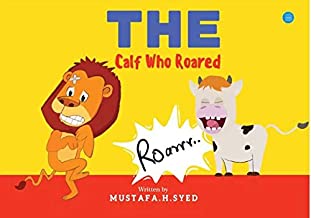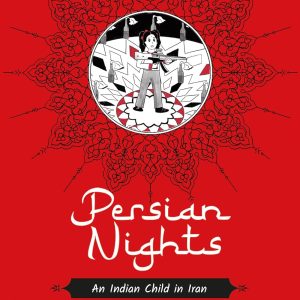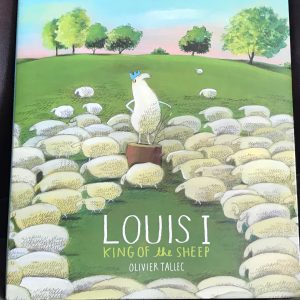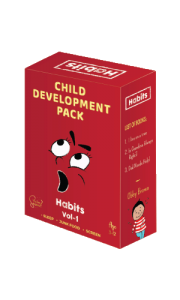Stories are an integral part of growing up. Indeed, they have the power to shape our minds. Which is why, we need to be especially sensitive to the stories we tell our children in a world that is increasingly polarised. Mustafa Syed’s Honesty Book Shop has plunged into the realm of storytelling with a view to incorporate diversity, inclusion and wellbeing in stories that our children grow up with. Mustafa Syed holds a Practitioner Certification in Applied Neuroscience for People Development. After 15+ years of experience in adult learning principles in the corporate world he is now taking the challenge to promote DIW or Diversity, Inclusion and Wellbeing via the art of storytelling for children of today.


Bookedforlife catches up with him for a chat…
You have 15+ years of experience in adult learning principles in the corporate world. What motivated you to incorporate some of these ideas for children?
The lockdown due to the pandemic provided a lot of time for me to spend with my family. This included spending time with my 4-year-old who loves listening to stories as most kids her age. Some of the stories that I would read were all about the prince rescuing the princess and how beauty was all about the exterior. This didn’t sit well with me as a new dad. As adults, who we are has a lot to do because of our core memories from our childhood. These memories form the core of our values. If we are able to impact these core memories whilst they are being formed we can create a world where people are inclusive, celebrate kindness, practice gratitude and are aware about diversity. This was my main inspiration.
Diversity, Inclusion and Wellbeing via the art of storytelling is your aim. Indeed, it is a need of the times. However, it is also a bold move in a world where competition is ingrained, unfortunately from a very early stage. How do you intend to go about this goal?
This is a very important question. Change is not easy. The crux is, through my self authored books centred around DIW, I leave cues across the book for my little curious readers to ask questions allowing parents to share experiences with them. I intend to partner with passionate social change catalysts to drive awareness about DIW. I also blog each week for parents to tweak their thinking and allow them to rethink how we can positively influence the young minds and build connections with the future of our world, our children.
What made you think of storybooks as the ideal medium for your message?
As adults we play an important role in shaping young minds, moulding them actually, at the end of the day. I wish to do away with societal preconceived notions and encourage children to think outside the box. My collection of books include colouring storybooks for the young minds similar to the mandala colouring books. Plus, with few books personalised, children get to be any character they want in the book whilst they colour it the way they visualise the story. This cognitive development of our curious young minds is what I felt is the best possible way to achieve the above in my journey of changing this world one book at a time.
The colouring story book, that can be personalized is an interesting concept. How does the activity element tie in with the ultimate goal?
In today’s world we are so consumed with capturing the moment via photos and videos that we miss experiencing it as it happens. My books are the perfect setting for friends and families as they allow you to experience moments as they occur and be a part of it by being characters from the story which they are reading to the young curious minds. The colouring part provides those initial first steps towards inclusiveness as it teaches us to accept things/people for what/who they are.

Could you briefly tell us how principles of neuroscience can be used for effecting change in the way children think? And, why is it important to do that early?
Imagine the following. Your child, despite repeatedly reprimanded by you doesn’t drink enough water. How does your child respond? They might endure your scolding using willpower or might stay silent, succumbing to feelings of fear or powerlessness, whilst maybe yet not drinking water. Or like Erin Calbough, a neurologist and author of the book “Second Nature: How parents can use neuroscience to help kids develop empathy, creativity and self, mentions the use of self-regulation. Here’s how I got my four year old to consider her options and resources, take stock of her feelings and reflect on past experience and respond deliberately. I kept an alarm for every 60-90 mins through the day with the sound of water gushing as the alarm sound. Each time the alarm went off I would drink water. A lot of our children behaviour is got a lot to do with the shadow we cast on them as parents. Here I was guilty of not drinking sufficient water myself through the day. Initially my 4-year-old was curious and would question me each time she heard the sound and the action I took. She started questioning why do I do that and slowly our conversations moved to the importance of water. I was gradually able to get her to drink water without waiting for the alarm. I built a connection instead of correcting her and got her to practise self-regulation where she felt in command of her actions.
The Calf who Roared is one book, and the other title, The Kitten who Said Bow Wow, both are books that will jostle readers out of a predictable pattern. This is evident from the title itself. What age groups are these intended for?
Both books titles and the story are about the messaging that you can be whoever you want to be and similarly we need to accept others for how they are. These two books are for the age group 3-9 years old.


Tell us about the series, Adventures of Malah: The Mystical Banana Tree
This is part 1 of a 3 series book that I am writing. This book explores the world of pre-teens. It continues my theme of DIW through the eyes of an 11-year old who adjusts her life accordingly as her parents decide to move to a small town to pursue their dream project of creating clean solar energy. The story encourages children to appreciate and respect uniqueness in others especially those with special needs.

Your books are available in an interesting array of gifting combinations, along with accessories like mugs/bags. Where can we see all the options available?
My books are available through various online retailers. However, on my website you will find exclusive merchandise such as character themed mugs and recycled cotton tote bags. The money from this is what I use to support the NGO side of my business where I intend to open my pricing once every 90 days for people to pay whatever price they wish for my books and products which I will ship on their behalf free of cost to the lesser privileged children in our society.
I can visualize these books being used very successfully in group settings as well, along with of course, individual settings. Do you intend to have workshops with kids on the same?
I offer complimentary book reading sessions and intent to collaborate with story tellers as well to ensure we debrief these books and our children absorb the DIW values to make this world a better place.




